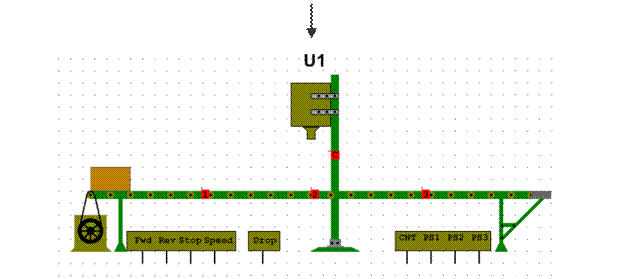IBM Plaza, Chicago, designed by the American architect Ludwig Mies van der RoheUnit 4 Modernism in architecture
IBM Plaza, Chicago, designed by the American architect Ludwig Mies van der Rohe Modernism started out as a revolutionary movement in the wake of the industrial age. It was a way of embracing the ideology of functionalism, while simultaneously rejecting tradition and history. The Eiffel tower, which impressed everybody beyond words when it was erected for the Universal Exposition in 1889, can be regarded as a harbinger of modernism. Modernism is the term used to describe the simplified, unornamented building styles which came into being at the turn of the XX century with efforts to reconcile the principles underlying architectural design with rapid technological advancement and the modernization of society. However it was not until after the Second World War that it gained mass popularity, after modernist planning was implemented as a solution to the previous failure of architecture and design to meet basic social needs. Gaining popularity after the Second World War, architectural modernism was adopted by many influential architects and architectural educators. Modernism is a term applied to the whole movement, with its exact definition and scope varying widely. These building styles are also known by other labels, like International Style, Neue Sachlichkeit or New Objectivity, and Functionalism. There were numerous movements, schools of design, and architectural styles, some being in tension with one another, and often equally defying such classification. The concept of modernism is a central theme in these efforts. Modernism eventually generated reactions, most notably Postmodernism, which sought to preserve pre-modern elements, while Neomodernism emerged as a reaction to Postmodernism. Proponents of the modern style wanted designs that were more in keeping with the social and political developments of a new age. It also became possible to implement these new design ideas as a result of new technological and engineering developments. Materials like glass, steel, iron and concrete began to be widely used in construction. The architects who designed in this style were mainly inspired by machine aesthetics*. They determined the form of a building according to its functional requirements and the materials to be used. Simplified forms were preferred and all unnecessary details were banished. Style icons of Modernism like Louis Sullivan and Frank Lloyd Wright and Ludwig Mies van der Rohe in the US, Otto Wagner in Vienna, Victor Horta in Brussels, Le Corbusier in France, Alvar Aalto in Finland made brilliant contributions to our heritage in the name of Modern Architecture, which also had the names of the International style and Functionalism, among others. Under slogans like “Less is More” and “Form follows Function” Modernists promoted ideals like simplicity in design, rationalism in use of materials, and functionalism * in planning. Although some of their buildings were said to be uninhabitable, like beautiful pieces of abstract art, they were certainly symbols of the new world. Modern architects were also concerned with city planning, with Le Corbusier designing the city of Chandigarh in India and being involved in designing Brasilia in Brazil. The principle problem with modern architecture was its uncompromising focus on functionality and rectilinear forms. Although people sometimes use the terms "contemporary" and "modern" architecture interchangeably, they technically are not synonymous. The era of Modern Architecture is said to have come to its end in the mid 1970-s, when it was replaced by the postmodernist movement, but the impact of this epoch is still spreading its ripple effects in the world today. Modernism continues as a dominant architectural style for institutional and corporate buildings into the XXI century. Notes: * machine aesthetics:Concept in art from the 20th century on, particularly architecture of the 1920s and 1930s, promoting virtues of machines, engineering principles and technology, and placing emphasis on clean, uncluttered forms thought to be characteristic of machines. *functionalism:The doctrine that the function of an object should determine its design and materials. Questions: 1. What does the term “Modernism” imply? 2. When did it gain mass popularity? 3. What were the architects who designed in this style mainly inspired by? 4. What movements followed Modernism? 5. What building materials were mainly used? 6. Could you name the architects who were the most prominent figures in regard to Modernism? 7. What were their the architects` ideals and slogans? 8. What other names for Modernism can you remember? 9. Is it correct to use the words "contemporary" and "modern" in regard to architecture interchangeably? Why? 10. How great is the impact of Modernism epoch?
|





